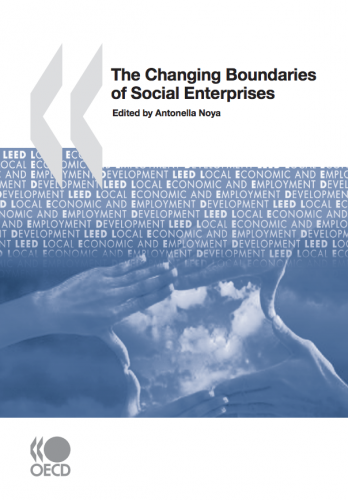This book presents and analyses some of the most interesting and recent developments in the expanding field of social enterprises in OECD member countries. Current and future trends are examined in critical areas for the development of social enterprises, such as: institutional frameworks; enabling financial environments, and; support structures and tools. Multistakeholder co-operatives, that is businesses formed by a variety of stakeholders interested in working together as equals to achieve a common goal, are also presented as an interesting and challenging model for social enterprises to combine economic sustainability and social impact. Lastly, the role of social enterprises in endogenously driven development processes is analysed in depth. In particular, the idea that it is the innovative features of social enterprises which make them particularly suited to sustaining local dynamics and a bottom-up approach to development is explored. Based on the analysis presented in this book, concrete policy recommendations for national and local policy makers are provided.
Download the Changing Boundaries of Social Enterprises
This book is published ten years after the first OECD/LEED study on social enterprises, which represented the first report of the phenomenon carried out by an international organisation. Social enterprises are local initiatives with the aim of combating exclusion and creating well-being for individuals and communities. They are a key component of the social entrepreneurship dynamic in OECD countries.
In fact social enterprises have proven to be able to contribute to: reducing social exclusion by reintegrating difficult groups into the labour market and by delivering well-being services (not only welfare services) to the underprivileged; creating jobs at the local level, and; increasing social capital and citizens’ participation, thereby creating more sustainable communities. However, much has still to be done to fully harness the potential of the sector and to better link it to social and economic policies. This book aims to contribute to a better understanding of the social enterprise sector, and of the new challenges it will face as a result of a social fabric weakened by a financial and economic crisis. New opportunities are opening up which will further enable them to contribute to social inclusion and economic well-being.
Table of Contents
Executive Summary
Chapter 1. New Frontiers in the Legal Structure and Legislation of Social Enterprises in Europe: A Comparative Analysis by Fabrizio Cafaggi and Paola Iamiceli
Chapter 2. Social Enterprises in OECD Member Countries: What are the Financial Streams? by Marguerite Mendell, and Rocío Nogales
Chapter 3. Networks as Support Structures for Social Enterprises by Dorotea Danielle, Toby Johnson, and Flaviano Zandonai
Chapter 4. Social Enterprises and Local Economic Development by Carlo Borzaga and Ermano Tortia
Chapter 5. Solidarity Co-operatives (Quebec, Canada): How Social Enterprises Can Combine Social and Economic Goals by Jean-Pierre Girard with Genevieve Langlois
Format
Theme





